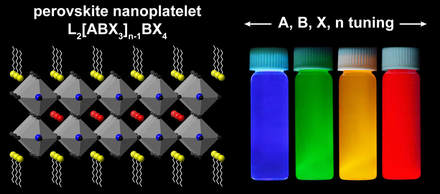|
Synthesis of Nanomaterials
Synthesis of high quality nanomaterials is critical to understanding how their physical structure affects their quantum-confined properties. My research focused on optimizing the colloidal synthesis of PbS nanocrystals for improved monodispersity and the facile synthesis of 2D perovskite nanoplatelets. Both these materials have excellent tunability for optical properties spanning from the visible to near-IR range, showing promise for applications such as photovoltaics, LEDs, and photodetectors |
|
Understanding Self-assembly
The phenomenon of nanoparticle self-assembly is a fascinating transition but also one which is difficult to study. Using highly uniform starting materials and a combination of electron microscopy and X-ray scattering, we were able to thoroughly characterize nanocrystal superlattices under a variety of conditions. We were able to take this method one step further at the Cornell High Energy Synchrotron Source (CHESS) by performing in-situ scattering measurements to understand with incredible detail how nanocrystals transition from a disordered colloid to a highly ordered superlattice state. |
|
Structure-Property Relationship
A key to maximizing the efficiency of nanomaterial-based devices is understanding how their physical self-assembly translates to changes in performance. For example, by using our thorough understanding of the physical structure of PbS films, we were able to correlate the degree of ordering with the ability of charge carriers to diffuse. In another study, the orientation and stacking of nanoplatelets was related to the preferred direction of their optical emission. |



